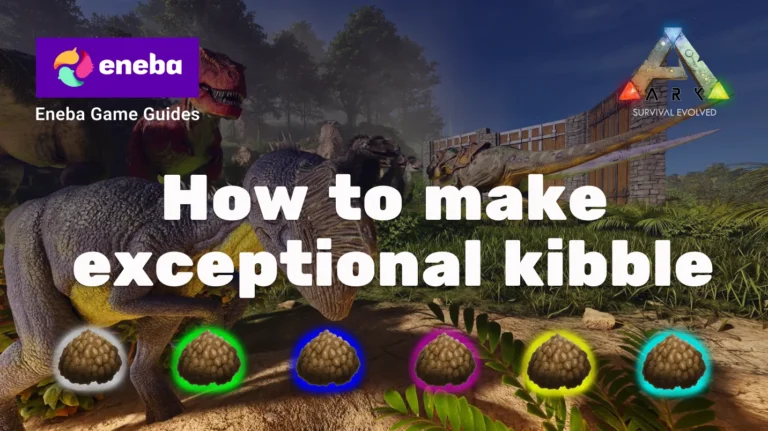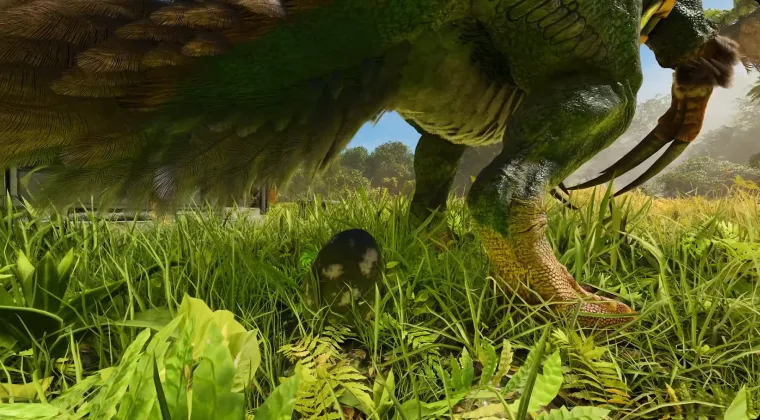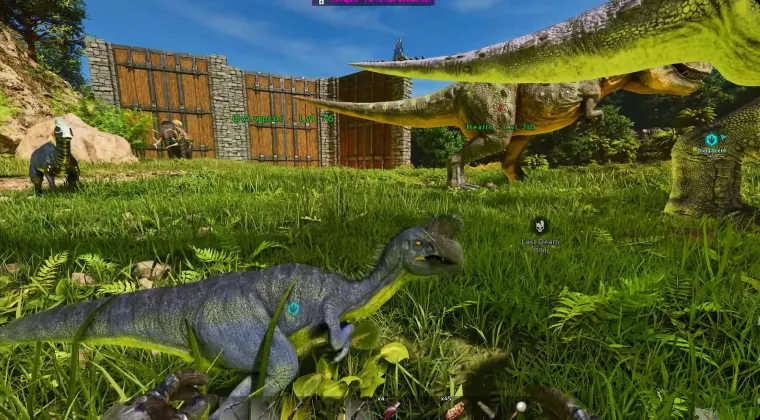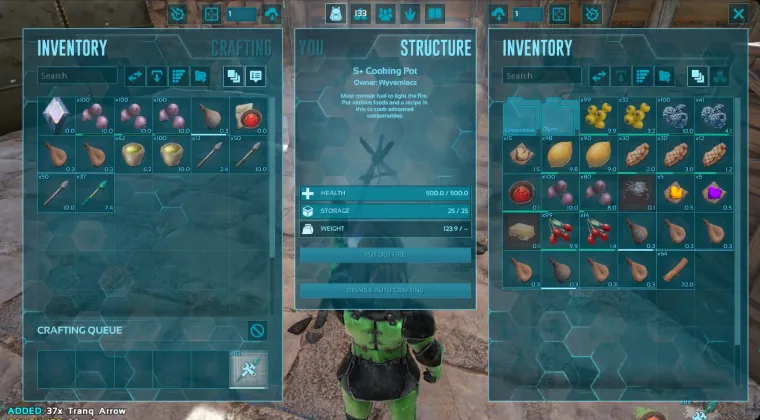How to Make Exceptional Kibble: Step‑By‑Step Guide for ARK: Survival Evolved

If you’ve ever wondered how to make Exceptional Kibble in ARK: Survival Evolved, you’re in the right place. Making your first batch of Exceptional Kibble can feel like a rite of passage. As a long‑time Survivor, I know the difference a well‑prepared kibble makes when you’re staring down a towering therizinosaur or hoping to coax a brontosaurus into joining your tribe.
This guide explains how to make Exceptional Kibble, why it’s worth the effort, which creatures you’ll need to gather ingredients, and some personal tips that help streamline the process. By the end, you’ll be ready to cook up this premium pet food and tame the biggest beasts the island throws at you.
Jump to:
How to Make Exceptional Kibble: Understanding the Basics

Exceptional Kibble sits near the top of the kibble hierarchy in ARK. It’s designed for taming extra‑large creatures efficiently, reducing the time and resources spent on meat or berries. Kibble works by boosting taming effectiveness; it fills the taming bar faster while keeping the effectiveness high, which means more bonus levels when the creature wakes up.
To craft this kibble, you need to combine several ingredients:
- an extra-large egg,
- fiber,
- focal chili,
- mejoberries,
- a rare flower, and
- a water source.
Each component plays a specific role. Eggs determine the kibble tier, berries add nutrition, the rare flower enhances taste, and water binds everything together. Focal chili is a cooked dish that increases crafting speed and adds a spicy kick to the kibble. As soon as you mix these ingredients in a cooking pot or industrial cooker, you’ll have Exceptional Kibble ready for taming.
If you’re new to ARK or just returning, catch up on the latest developments in the series. Our news post about celebrating ten years of dino survival details recent anniversary events and shows how the game has grown over the last decade. Those updates often bring new creatures and recipes that can influence your kibble plans.
Gathering Ingredients for Exceptional Kibble
Choosing the Right Eggs

The most important ingredient is an extra large egg. Only certain creatures lay these eggs, and you’ll need to tame or farm them. On the Island map, common sources include the brontosaurus, rex, giganotosaurus, therizinosaur, quetzal, carcharodontosaurus, and basilisk.
Each of these dinosaurs produces eggs that qualify as extra large. I recommend taming a pair of rexes or therizinosaurs early on; they’re versatile fighters and provide a steady supply of eggs. Keep your dinosaurs well‑fed and enclosed in a safe pen so they lay eggs regularly.
Some Survivors ask whether any extra-large egg works. Yes – any egg classified as extra large counts, even tech variants like Tek Rex and Tek Quetzal eggs. I usually collect a mix because I breed rexes for boss fights and quetzals for hauling cargo. If you’re on newer maps like Genesis, the megachelon also lays huge eggs that can be used.
Harvesting Fiber and Mejoberries
Fiber and mejoberries are easy to gather. Use a metal sickle or therizinosaur to collect fiber quickly from bushes and ferns. Mejoberries can be hand‑picked or harvested with a brontosaurus or therizinosaur; these creatures sweep through vegetation and fill their inventory in seconds.
Always carry more mejos than you think you’ll need. Besides crafting kibble, mejoberries tame herbivores and feed your dinos in troughs.
Cooking Focal Chili

Focal chili gives Exceptional Kibble its unique boost. To cook it, you’ll need:
- 9 pieces of cooked meat (raw meat won’t work).
- 5 citronal (grown in crop plots using seeds and fertilizer).
- 20 amarberries.
- 20 azulberries.
- 20 tintoberries.
- 10 mejoberries.
- 1 unit of water (using a waterskin, jar, or canteen).
Place all ingredients in a cooking pot or industrial cooker, add a fuel source like wood or thatch, and light the fire. After about a minute, you’ll produce a serving of focal chili. Don’t leave charcoal in the pot, or you might end up with dye instead of chili. Having a dedicated cooking pot for recipes keeps things organized and prevents mistakes.
Finding Rare Flowers

Rare flowers are harvested from specific plants in swamps and mountain regions. On the Island, I gather them by hand in the Redwoods or on the mountains using a therizinosaur. A beaver dam sometimes contains rare flowers as well.
Keep a stack on hand, as you’ll need one per kibble. Rare flowers spoil slowly, but plan regular harvesting trips to maintain your supply.
Securing Water
Each kibble consumes one unit of water, so bring waterskins or jars to your cooking station. In an industrial cooker, water pipes supply the necessary water automatically. If you’re using a cooking pot in a remote base, fill several waterskins and rotate them out after each cooking cycle. Running out of water mid‑recipe will waste your ingredients, so plan ahead.
Crafting Exceptional Kibble: Step‑by‑Step Cooking Guide

Once you have the ingredients, it’s time to cook. You can craft Exceptional Kibble in a Cooking Pot or Industrial Cooker. The process is the same, but the industrial cooker is faster and consumes water from pipes.
- Prepare your station. Make sure your cooking pot is placed on the ground with access to fuel. If you’re using an industrial cooker, connect it to an irrigation system and a generator.
- Add ingredients. Put one extra large egg, five units of fiber, one serving of focal chili, ten mejoberries, one rare flower, and a water container into the cooking pot. Double‑check the quantities to avoid wasted items.
- Light the fire. Use wood, thatch, or sparkpowder to ignite the pot. Sparkpowder burns longer and produces no charcoal, which prevents accidental dye creation.
- Wait for cooking. Within thirty seconds to a minute, the ingredients will combine into Exceptional Kibble. Each recipe yields one kibble.
- Remove kibble and repeat. Transfer the kibble to a preserving bin or refrigerator to extend its spoil timer. Then restock the pot with ingredients for your next batch.
For larger operations, use an industrial cooker. It allows you to craft multiple kibbles at once if you load in stacks of each ingredient. The cooker automatically draws water from pipes, so there’s no need to refill waterskins. I’ve built my base near a river to pipe water directly into the cooker, which saves time and lets me focus on gathering eggs and berries.
Our guide on the best multiplayer survival games lists ARK: Survival Evolved as a standout co‑op experience. Playing with friends makes kibble production more efficient – one person gathers berries, another watches over the egg farm, and a third manages the cooking station. Cooperation speeds up the process and keeps your tribe stocked with high‑quality taming food.
Using Exceptional Kibble in Taming
Exceptional Kibble isn’t just about cooking; it’s about taming powerful creatures quickly and preserving taming effectiveness. To use kibble effectively, follow these steps:
- Knock out the target. For carnivores like the rex or spino, use tranq darts, tranq arrows, or shocking tranq darts to render them unconscious. For passive tames such as the basilosaurus or tropeognathus, Exceptional Kibble can be fed directly without knocking them out.
- Place kibble in the creature’s inventory. Once the creature is unconscious, access its inventory and transfer the kibble. It will eat automatically as its hunger drops.
- Protect the tame. While the creature is out, guard it from predators and keep narcotics or narcoberries on hand to maintain torpor. Exceptional Kibble fills the taming bar faster than meat or berries, so fewer feedings are needed.
- Enjoy a higher‑level companion. Because kibble maintains high taming effectiveness, your dinosaur will gain more bonus levels upon completion. This results in better stats for combat, harvesting, or utility.
Currently, Exceptional Kibble is ideal for taming the brontosaurus, giganotosaurus, karkinos, managarmr, mosasaurus, quetzal, rex, spino, and therizinosaur. It also works for passive tames like basilosaurus and tropeognathus.
Feeding these creatures anything less than Exceptional Kibble will slow the process and reduce taming effectiveness. You can substitute Superior Kibble or Extraordinary Kibble for Exceptional Kibble because higher‑tier kibbles work on lower tiers, but lower‑tier kibbles won’t have the same efficiency.
From my own adventures, taming a quetzal with Exceptional Kibble saved hours. Quetzals have high torpor drain and take a long time to tame with regular meat. By using this kibble, the taming bar filled quickly, and I could focus on defending against attackers rather than gathering more prime meat. That quetzal later became my primary transport for moving metal and obsidian across the map.
Tips and Best Practices for Kibble Production
Build an Egg Farm
Consistency is key. Set up an egg farm with multiple females of the same species and at least one male to fertilize them. Enclose them in a pen near your base, provide feeding troughs, and check for eggs frequently.
Enable mating so you can incubate fertilized eggs for breeding, while unfertilized eggs go into kibble production. Use a hatchery mod or air conditioners to automate incubation.
Automate Berry and Fiber Harvesting
For large kibble orders, manual harvesting becomes tedious. Tame a therizinosaur and pump points into weight and delicate harvesting. Its attack sweeps gather fiber and berries in large quantities.
Pair it with a brontosaurus for mejoberries. Store berries in large storage boxes or feeding troughs near your cooking area so they’re easy to access when crafting.
Keep a Dedicated Cooker
Mixing dyes, soups, and kibbles in the same pot can cause unintended recipes. I keep one cooking pot exclusively for dyes and another for food items like soups and kibbles. This prevents accidents and speeds up production because I don’t have to clear charcoal or leftover ingredients every time.
Watch Spoil Timers
Kibble spoils in three days if kept in your inventory, but it lasts longer in a preserving bin and even longer in a refrigerator. Focal chili spoils after five hours, so cook only what you need or store it in the fridge. I once lost a batch of focal chili because I left it in a storage box overnight – it spoiled, and I had to recook the entire batch before my tame was ready.
Practice on Easier Kibble First
Before tackling Exceptional Kibble, practice making lower tiers like simple or regular kibble. This teaches you the cooking system, ingredient management, and fueling. By the time you’re ready for Exceptional Kibble, you’ll already have crop plots, egg farms, and storage solutions in place.
Our roundup of the best dinosaur games highlights ARK alongside other prehistoric adventures. If you enjoy the mix of crafting, survival, and dinosaur taming, you might find other titles worth your time while your kibble cooks.
Beyond Kibble: Enhancing Your ARK Experience
Exceptional Kibble is just one part of surviving and thriving in the world of ARK. Here are a few ways to enhance your gameplay once you’ve mastered kibble production:
- Explore new maps and expansions. The game has evolved with maps like Scorched Earth, Aberration, Extinction, and Genesis. Each offers unique biomes and creatures that may change which eggs you use for kibble.
- Join a tribe. Playing with others on official or unofficial servers makes resource gathering and taming easier. Tribes share tames, protect each other, and divide tasks. Coordinated teams can build industrial cookers, irrigation systems, and secure egg farms much faster than solo players.
- Experiment with mods. On PC and Steam, mods add quality‑of‑life features like stackable items, automatic feeders, and advanced cooking stations. Search the Steam Workshop for highly rated mods that streamline kibble production and base management. Just be sure to back up your saved data before installing new mods.
- Prepare for upcoming titles. Studio Wildcard continues to expand the ARK universe with ARK 2 and animated adaptations. Learning advanced techniques like kibble production now will give you a head start when new games arrive.
Mastering Exceptional Kibble for Dino Domination
Exceptional Kibble might seem like a small detail in the sprawling world of ARK, but it makes a big difference in taming efficiency. By gathering extra-large eggs, cooking focal chili, and mastering the cooking process, you’ll cut taming times and maximize the levels of your new companions. Along the way, setting up an egg farm, automating resource collection, and maintaining spoil timers will turn kibble making into a smooth operation.
As you refine your approach, remember to keep exploring. Check out our curated lists of survival and dinosaur games for fresh inspiration, and stay informed about ARK’s ongoing updates through our news coverage.
When you’re ready to take your survival skills to the next level, pick up an ARK: Survival Evolved Steam key from Eneba’s marketplace. Owning a digital copy lets you revisit the island whenever you want and apply your newfound kibble expertise to tame every creature.
FAQs
What is Exceptional Kibble used for in ARK?
Exceptional Kibble is used for taming extra‑large creatures like rexes, quetzals, and spinos in ARK. It significantly increases taming speed and maintains high taming effectiveness, resulting in more bonus levels when the creature awakens.
How do you make Exceptional Kibble?
To make Exceptional Kibble, you combine an extra-large egg, fiber, focal chili, mejoberries, a rare flower, and water in a cooking pot or industrial cooker. Cook the ingredients until the kibble forms, and then refrigerate it to extend its shelf life.
Which eggs are used to make Exceptional Kibble?
The eggs used to make Exceptional Kibble are any classified as extra large, including brontosaurus, rex, quetzal, giganotosaurus, therizinosaur, carcharodontosaurus, and megachelon eggs. Tek variants of these eggs also count toward the recipe.
What animals prefer Exceptional Kibble?
The animals that prefer Exceptional Kibble are large creatures such as brontosaurus, giganotosaurus, karkinos, managarmr, mosasaurus, quetzal, rex, spino, and therizinosaur. Passive tames like basilosaurus and tropeognathus also eat this kibble.
Can you use extraordinary kibble instead of Exceptional Kibble?
Yes, you can use Extraordinary Kibble instead of Exceptional Kibble because higher‑tier kibbles work on lower tiers. Extraordinary Kibble provides the same taming progress or better, though its ingredients and preparation are different.

















